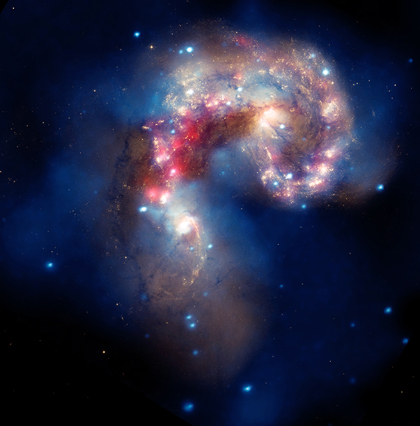
A new composite image from NASA's Great Observatories presents a stunning display of the Antennae galaxies.
X-ray data from Chandra (blue), optical data from Hubble (gold and brown), and infrared data from Spitzer (red) are featured.
Supernova explosions are enriching the intergalactic gas with elements like oxygen, iron, and silicon that will be incorporated into new generations of stars and planets
A beautiful new image of two colliding galaxies has been released by NASA's Great Observatories. The Antennae galaxies, located about 62 million light years from Earth, are shown in this composite image from the Chandra X-ray Observatory (blue), the Hubble Space Telescope (gold and brown), and the Spitzer Space Telescope (red). The Antennae galaxies take their name from the long antenna-like "arms," seen in wide-angle views of the system. These features were produced by tidal forces generated in the collision.
more, with bigger versions:
http://chandra.harvard.edu/photo/2010/antennae/